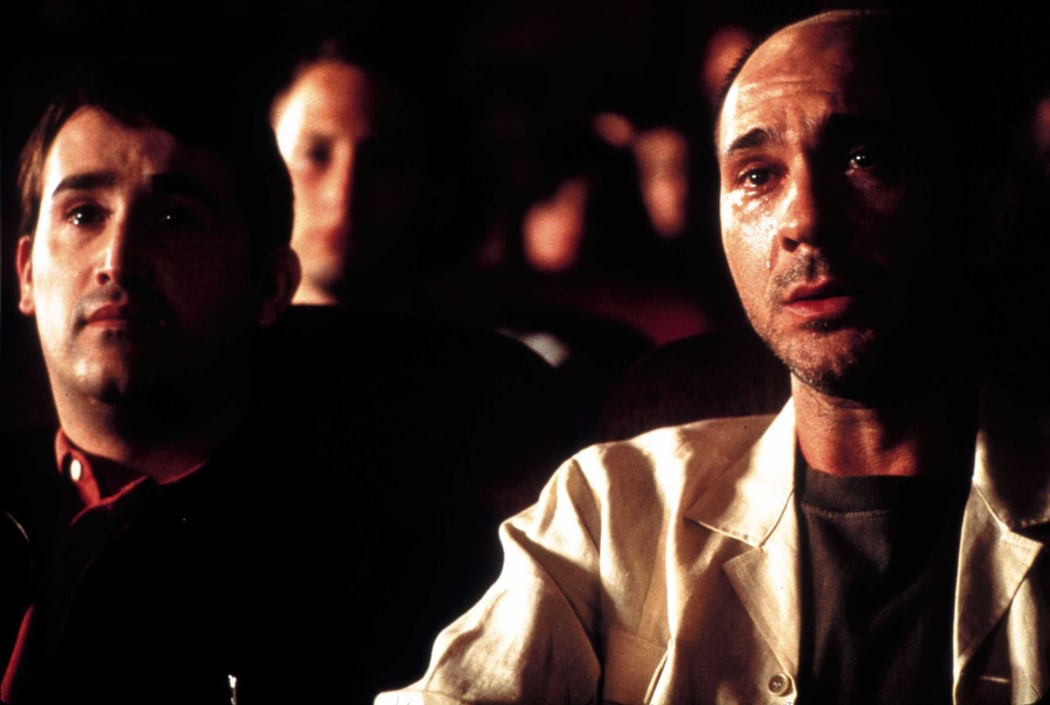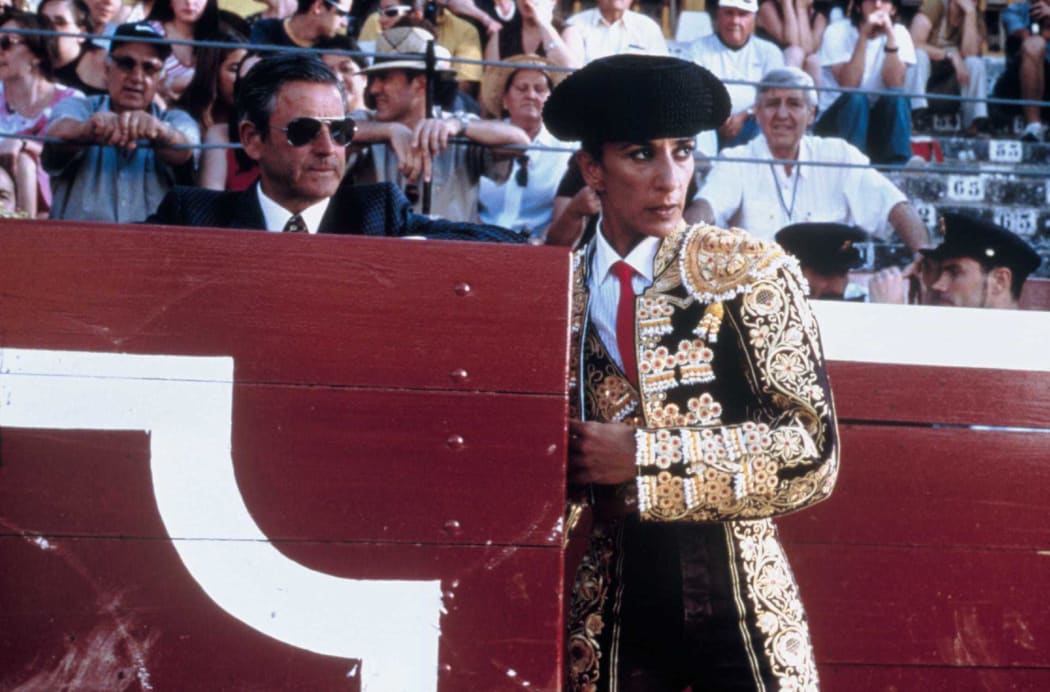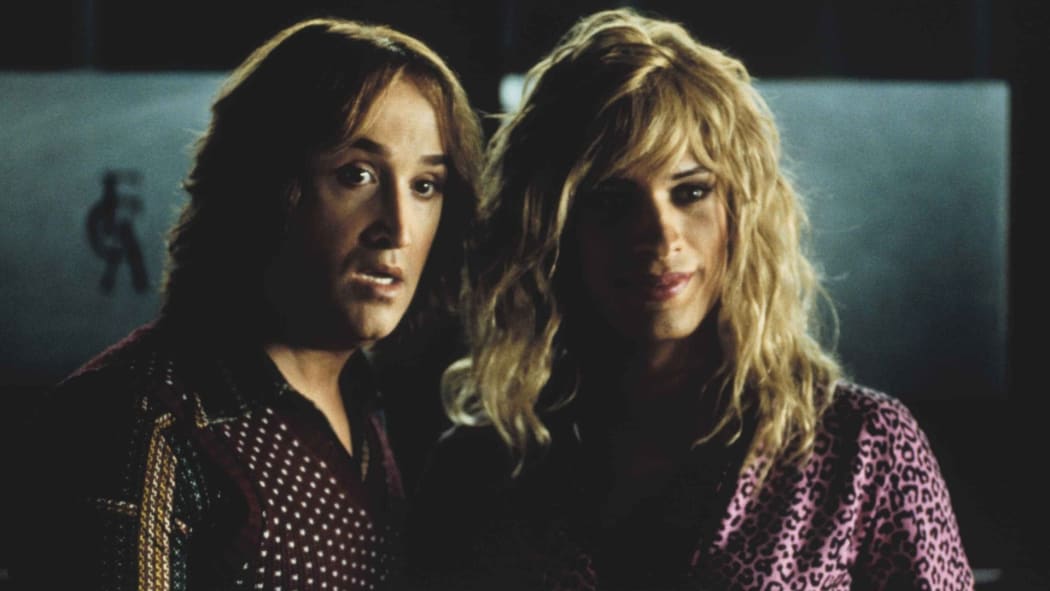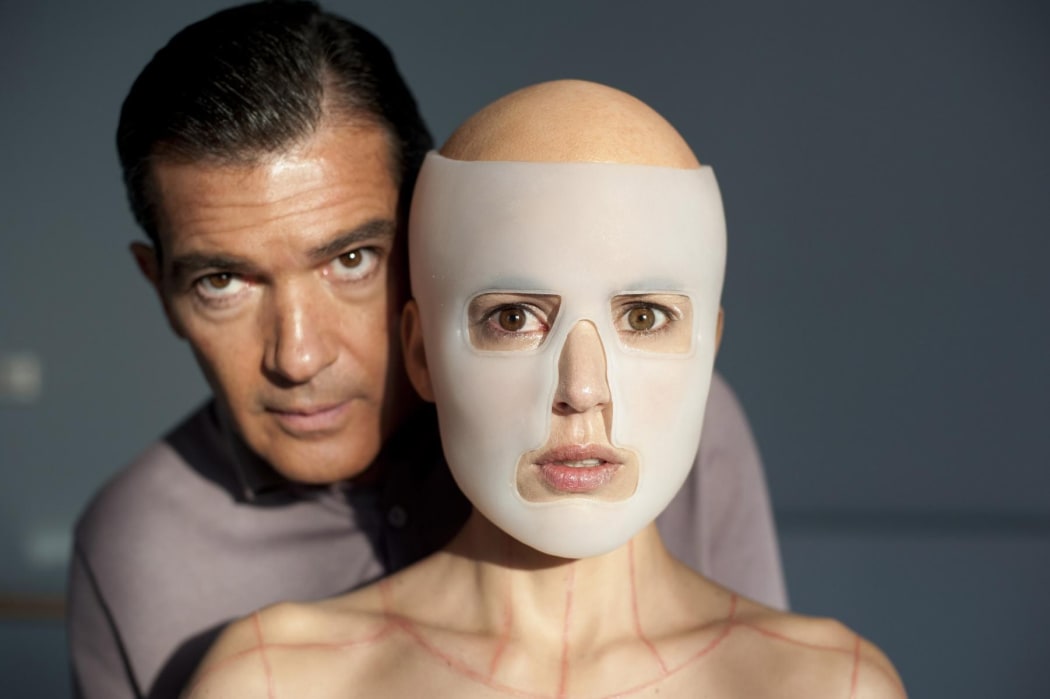Julieta, the latest film by Spanish iconoclast Pedro Almodóvar, arrives in cinemas today so Dan Slevin thought he would prepare by watching (or re-watching) three more of his post-2000 productions – and was surprised by what he found.

Javier Cámara and Darío Grandinetti in Almodóvar's Oscar-winning Talk to Her (2002) Photo: Sony Pictures Classics
Almodóvar’s Julieta is a front runner for the Best Foreign Language Academy Award next year and has already been acclaimed at this year’s New Zealand International Film Festival (among many others). By all accounts, it is a change of pace. An adaptation of three short stories by the wonderful Canadian author Alice Munro, Julieta returns the Spanish auteur to his female-focused roots, I’ll be reviewing the film for At the Movies on RNZ National next Wednesday.
To warm myself up I thought I would reacquaint myself with some of his oeuvre – but with a list of directing credits stretching back to Labyrinth of Passion in 1982, some judiciousness had to be applied. Focusing on his 21st Century work was probably going to be more helpful.

Rosario Flores on her way to a coma in Talk to Her Photo: Sony Pictures Classics
Talk to Her (2002)
Back in the day when I was the owner/manager of a Wellington arthouse cinema, Talk to Her was one of the first films I programmed. In those days, it still took films a while to get to New Zealand after Cannes, so my enthusiasm was largely based around a stunning – virtually wordless – trailer which featured a hypnotic soundtrack and a mysterious mix of bullfighting and contemporary dance.
The film proved very popular and that enthusiasm was matched by the Oscar people who gave it an award for Best Original Screenplay – Almodóvar’s second Oscar after the Best Foreign Language prize in 1988 for Women on the Verge of a Nervous Breakdown. Re-watching Talk to Her this weekend after nearly fifteen years, I was reminded of why I was so taken with it then. The discovery of the choreography of Pina Bausch – her Café Muller is a centrepiece of the film and the performance that brings the two central characters together. A stunning soundtrack featuring music for Bausch’s works as well as a wonderful performance by Caetano Veloso (similarly new to me at the time). An emotional restraint that I was unaccustomed to from Almodóvar whose previous films had been notable for their camp and their excesses.
But the central conceit of the film strikes me as somewhat questionable now and I was surprised that more wasn’t made of it at the time. Essentially, a woman is raped back to life after months in a coma and this rape is – in the film, I think – seen as an act of devotion, an act of love. I felt a lot more awkward about it on Saturday than I did back in 2003, even though I still think of the film as a remarkably beautiful achievement.

Javier Cámara and Gael Garcia Bernal in Bad Education Photo: Sony Pictures Classics
Bad Education (2004)
For reasons of my own personal history and the subject matter, I’d avoided Bad Education up to now. Inspired by Almodóvar’s own childhood, the film was supposedly about the fallout from sexual abuse by Catholic priest teachers, a topic I wasn’t really ready for. As it turned out, Bad Education is less interested in the trauma than the relationships between the three central characters – the guilty priest, the victim and the victim’s best friend (who has become a successful filmmaker and through whose eyes we see the story).
A combination of noir thriller (blackmail! Intrigue!), quirky transgressive drama and heightened melodrama, the combination didn’t really work for me but that’s possibly because I was expecting something so different. Bad Education is worth watching for an absolutely stupendous performance by Gael Garcia Bernal who dominates the screen in every scene he’s in, playing what amounts to three different roles.
Again, the questionable lack of overt judgement of some appalling behaviour is something of a trademark.

Antonio Banderas and Elena Anaya in The Skin I Live In Photo: Transmission
The Skin I Live In (2011)
After what I felt was the great Almodóvar blowing smoke up his own ass with 2009’s disappointing Broken Embraces, The Skin I Live In was a wonderful and weird return to form – as deranged as anything else he has produced in more than thirty years of feature film making to that point. Antonio Banderas plays a successful plastic surgeon with a dark secret. Many of his greatest medical achievements are a result of the experiments he conducts on a beautiful woman (Elena Anaya) held captive in his mansion.
Who is she? Why is she there? These questions are answered in the film but must be skirted around here for even the tiniest hint at spoilers will wreck some of the twistiest (in all senses of the word except perhaps confectionary) surprises of any recent film. If this film had been made in the 1950s, Banderas’ character would have been played by Vincent Price (think House of Wax).
The Skin I Live In is more than just an incredibly bizarre premise taken to outrageous conclusions, more than just a campy homage to gothic horror. It’s a beautifully constructed film, elegant, colourful, controlled, flawless. This was Almodóvar back in his finest form, making the unbelievable not just credible but almost desirable.
As if to contradict the depressing conclusion contained in my piece for Jesse Mulligan the other day, only one of these films is unavailable on New Zealand’s subscription streaming services. Talk to Her is only available on DVD (via Fatso or one of the better remaining local home video outlets). Bad Education is on Netflix, Google Play and Neon. You can find The Skin I Live In on Netflix, Google Play and Quickflix. Both of the latter are available for rental on iTunes.
Julieta opens at select cinemas nationwide and you can win a double-pass to it by listening to the latest episode of Rancho Notorious.

